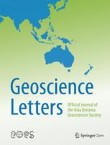GNSS brings us back on the ground from ionosphere
Both solar activities from above and perturbations of Earth’s surface and troposphere from below disturb ionospheric structure and its dynamics. Numerous ionospheric phenomena remain unexplained due to the com...
